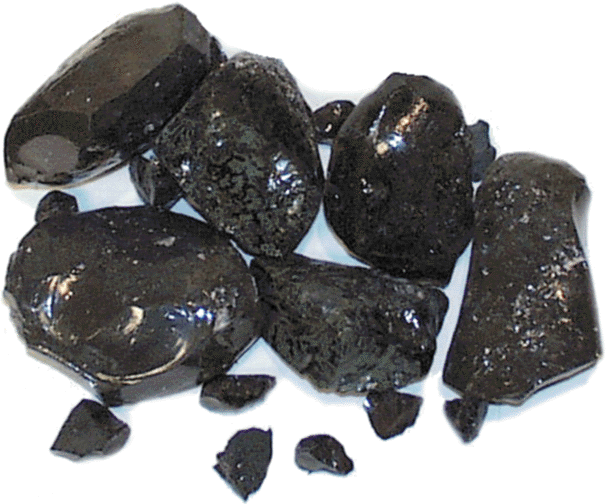There has been a lot of talk about green jobs. Obama and the Democrats want to create green jobs all over the United States. I hear the President constantly talking about creating green jobs to replace the ones lost and how we need to move from coal and oil based power plants to wind and solar.
This sounds great and honestly, I am all on board with green energy. If it
 is wind turbines, sea turbines, more hydro-electric plants, etc. let's do it. The thing is, not all of these programs will sufficiently work. Based upon the climate that you live in, you may not receive enough wind, or sunlight to effectively utilize the capacity of a wind turbine or solar panels. On top of that, in the Midwest we have to deal with a little thing called hail. Hail does not work well on a solar panel and the cost of replacing solar panels is not cheap. I know the argument is that if more people use them, it will drive the costs down, but no one can say that it will drive the costs down so that it is cheap enough to replace every time there is a decent hail storm. Add on top of it, these forms of green technology are not efficient and can raise the cost of electricity, it does not make sense. What we need is a common sense way to green technology. A way to take what is readily available and convert it into energy. Scientists are already working on ways to convert mud to fuel or harvesting energy from humans but these are a long while off.
is wind turbines, sea turbines, more hydro-electric plants, etc. let's do it. The thing is, not all of these programs will sufficiently work. Based upon the climate that you live in, you may not receive enough wind, or sunlight to effectively utilize the capacity of a wind turbine or solar panels. On top of that, in the Midwest we have to deal with a little thing called hail. Hail does not work well on a solar panel and the cost of replacing solar panels is not cheap. I know the argument is that if more people use them, it will drive the costs down, but no one can say that it will drive the costs down so that it is cheap enough to replace every time there is a decent hail storm. Add on top of it, these forms of green technology are not efficient and can raise the cost of electricity, it does not make sense. What we need is a common sense way to green technology. A way to take what is readily available and convert it into energy. Scientists are already working on ways to convert mud to fuel or harvesting energy from humans but these are a long while off.As an avid reader of Popular Science, I was intrigued by an article that came out in March of 2007 called the The Prophet of Garbage. In this article, you find that scientists and engineers have already created a way to convert garbage into energy. Without getting too techie, the trash is fed into an auger that shreds it into small pieces. Then the mulch is delivered into the plasma chamber, where the superheated plasma converts it into two by-products.

- One is a syngas composed mostly of hydrogen and carbon monoxide, which is fed into an adjacent system to be converted into energy or fuel .
- The other is molten glass that can be sold for use in household tiles or road asphalt.
This process and industry could easily eliminate our landfills and pay for itself in approximately 10 years. In addition, the syngas could be used to create energy by using turbines. In fact, over a year later Popular Science posted online an article on Florida to Make Gas from Trash which explains how St. Lucie County is planning to build one of these , to vaporize 500 tons of trash a day into pressurized gas, which will then use turbines to generate 60MW, enough electricity for 50,000 homes. Unfortunately, the St. Lucie County plan was put on hold and is still awaiting permits. Other US cities are proposing this technology but continue to receive a lot of push-back. So the question is, why is this not already in place here in the United States and why isn't the president pushing for this kind of green technology.
- It is not 100% green. A program like this does produce byproducts such as Syngas, Heat and Slag. The Syngas is a mixture of hydrogen and carbon monoxide. The plant scrubs the Syngas and uses two-thirds of it to generate the electricity that powers the plant. The remaining one-third is sold to utility companies. The Slag is a solid residue resembling obsidian that can be cleaned of contaminants and be processed into bricks, synthetic gravel or asphalt, and other materials that we currently mine out of the ground. In regards to the Heat, there is no current plans for using it that I am aware of but am sure that ways to harness and use it for steam or building heating are being looked into. Currently two of these plants are in place and operation in Japan and Japan’s air quality standards are slightly stricter than those in the United States. Groups like the Global Alliance for Incinerator Alternatives (GAIA) are pushing to delay projects like this in the United States. They call for more studies to review and research this process. Reviewing their website, you find that the GAIA is an international organization, made up of several pro-environmental groups. In North America, the group is made up of such groups as Zero-Waste USA, Greenaction for Health and Environmental Justice and Eco-Cycle USA. These groups' basic mission is to create a waste free and 100% recycling society. The GAIA is so far to the left that they did not support "Cap and Trade" because it did not do enough to stop the use of fossil fuels for energy. Many of these type of groups were active supporters of the Obama and contributed to his candidacy.
- It is important to note that the the GAIA does/did have some loose ties to the White House. This organization worked with several other organizations including Van Jones' Green for All at various conferences and joint ventures, including a May 2009 conference titled "Job and Equity Impacts of Carbon Pricing Policies Conference". The GAIA has received funding from the liberal philanthropic group The Overbrook Foundation, who also funded Kevin Jennings' GLSEN. Additionally, the GAIA initiated the campaign "Recycling Works! A Jobs, Energy and Climate Solution" with the International Brotherhood of Teamsters and was supported by Van Jones' Green for All.
- Not in my backyard or NIMBYism. Some of the opponents do not support the process simply because it is new and they do not want it in their backyard. It is fine that it is fully operational in Taiwan, Japan, England and Canada, but they do not want it here. These are generally the same people who do not want the US to build more nuclear reactors. Because the technology does pose some risk they would prefer safer tried and true methods. In addition, these opponents call for more testing and more smaller scale facilities as a proof of concept. In the meantime, they would promote methods such as increased recycling, etc.
- This is new, to the US, technology. To make these plants profitable and also handle current and future needs, they would have to be built on a larger scale than those in places like Japan and England. While the technology is available it is not common enough to be "cheap", thus putting a higher price tag on it. Uneasy investors and city/state governments are leery and sometimes unwilling to finance the entire thing considering the unknown in regards to a return on their investment and the publicity that comes with outspoken environmental groups as mentioned on bullets 1 and 2. That is why the St. Lucie County project was so important as it would prove viability of this project. Add on top of that, landfill facilities usually charge on average $35.00 per ton of garbage, it is cheaper to dump the garbage in a landfill. Add to that, many investors are leery to invest and make some of the mistakes seen with ethanol plants.
Is this technology perfect. No, it is not 100% green and it may increase some of the costs related to garbage. If we are to focus on the creation of green jobs, this program and ones of its type will see realistic benefits by just decreasing the size of landfills, the amount of methane in the air, the creation of additional energy and the creation of additional jobs that would be needed to build, run and maintain these plants.
Finally, let me state this for the record. I am in no way affiliated with any power/energy, trash or green tech company. This entire article was written based upon my interest in technology and as a response to those who are constantly calling for more green tech.
So what do you think?



No comments:
Post a Comment